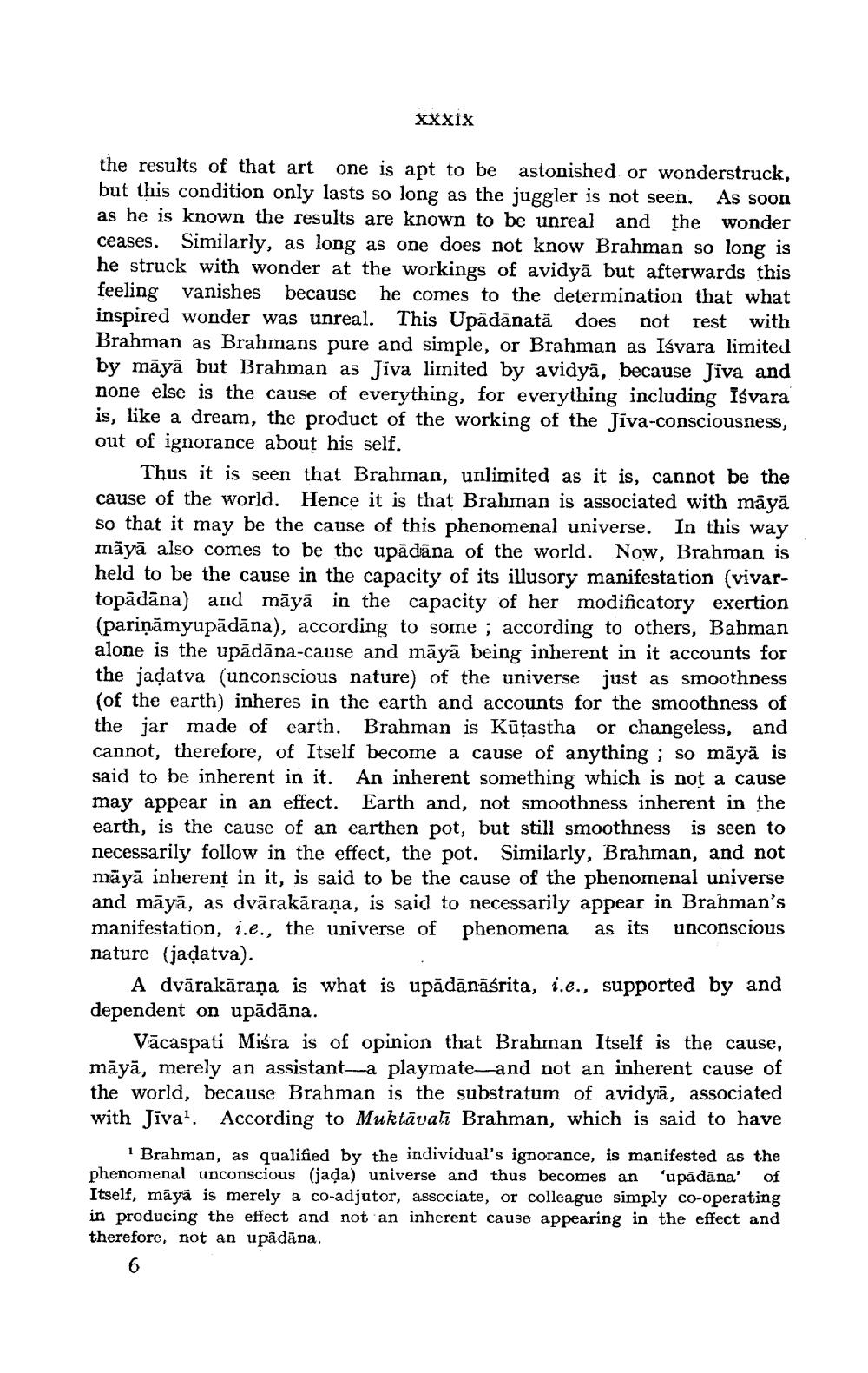________________
Xxxix
the results of that art one is apt to be astonished or wonderstruck, but this condition only lasts so long as the juggler is not seen. As soon as he is known the results are known to be unreal and the wonder ceases. Similarly, as long as one does not know Brahman so long is he struck with wonder at the workings of avidyā but afterwards this feeling vanishes because he comes to the determination that what inspired wonder was unreal. This Upādānată does not rest with Brahman as Brahmans pure and simple, or Brahman as Isvara limited by māyā but Brahman as Jiva limited by avidyā, because Jiva and none else is the cause of everything, for everything including Isvara is, like a dream, the product of the working of the Jiva-consciousness, out of ignorance about his self.
Thus it is seen that Brahman, unlimited as it is, cannot be the cause of the world. Hence it is that Brahman is associated with māyā so that it may be the cause of this phenomenal universe. In this way māyā also comes to be the upādāna of the world. Now, Brahman is held to be the cause in the capacity of its illusory manifestation (vivartopādāna) and māyā in the capacity of her modificatory exertion (pariņāmyupādāna), according to some ; according to others, Bahman alone is the upādāna-cause and māyā being inherent in it accounts for the jadatva (unconscious nature) of the universe just as smoothness (of the earth) inheres in the earth and accounts for the smoothness of the jar made of carth. Brahman is Kūțastha or changeless, and cannot, therefore, of Itself become a cause of anything ; so māyā is said to be inherent in it. An inherent something which is not a cause may appear in an effect. Earth and, not smoothness inherent in the earth, is the cause of an earthen pot, but still smoothness is seen to necessarily follow in the effect, the pot. Similarly, Brahman, and not māyā inherent in it, is said to be the cause of the phenomenal universe and māyā, as dvārakāraṇa, is said to necessarily appear in Brahman's manifestation, i.e., the universe of phenomena as its unconscious nature (jadatva).
A dvärakāraṇa is what is upādānāśrita, i.e., supported by and dependent on upādāna.
Vācaspati Misra is of opinion that Brahman Itself is the cause, māyā, merely an assistant--a playmate and not an inherent cause of the world, because Brahman is the substratum of avidyā, associated with Jival. According to Muktāvati Brahman, which is said to have
Brahman, as qualified by the individual's ignorance, is manifested as the phenomenal unconscious (jada) universe and thus becomes an 'upādāna' of Itself, māyā is merely a co-adjutor, associate, or colleague simply co-operating in producing the effect and not an inherent cause appearing in the effect and therefore, not an upadana.




